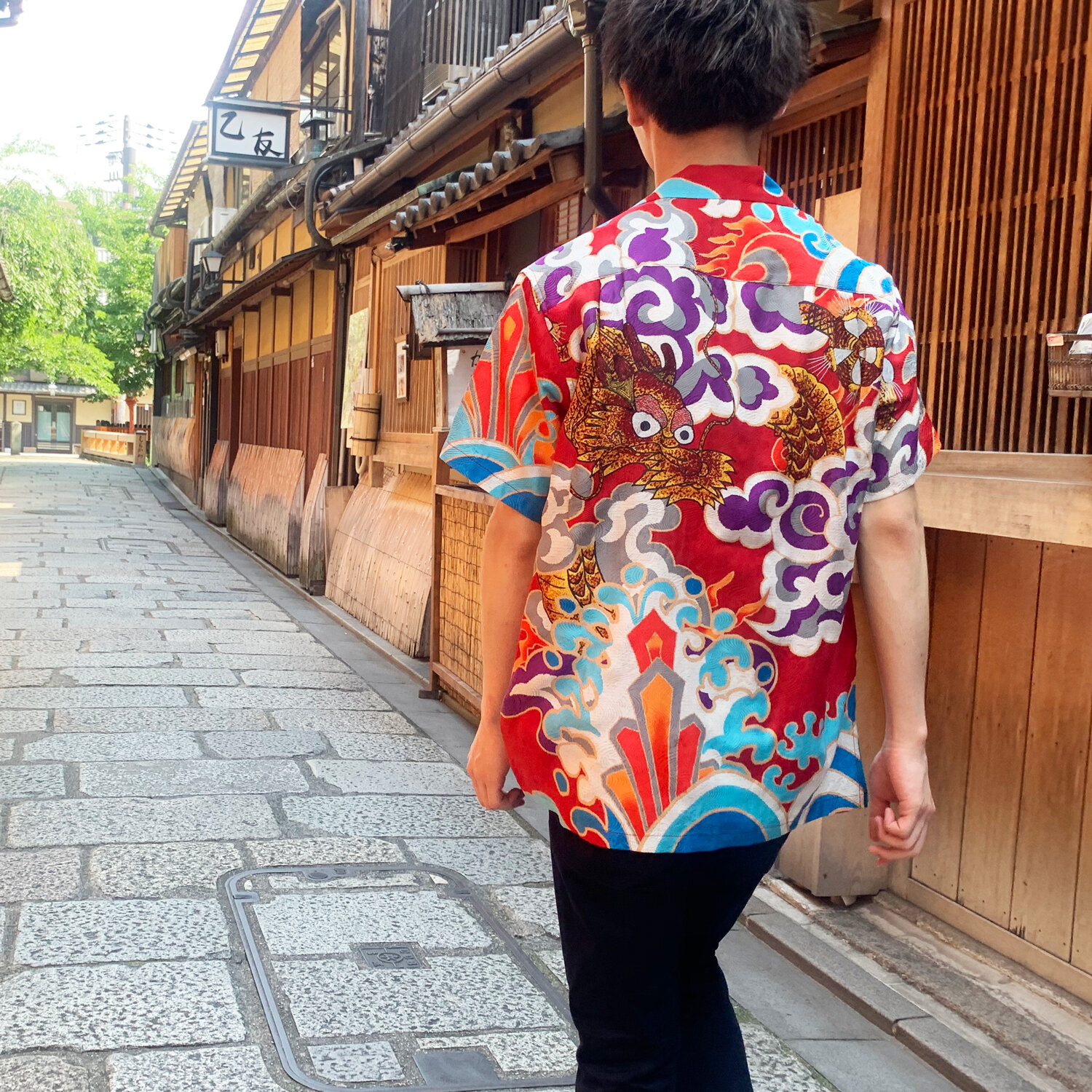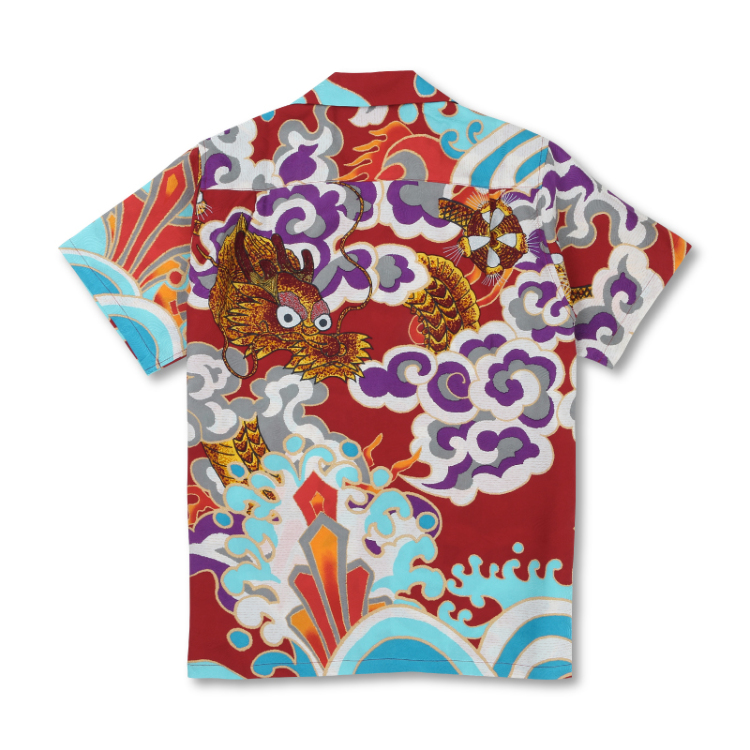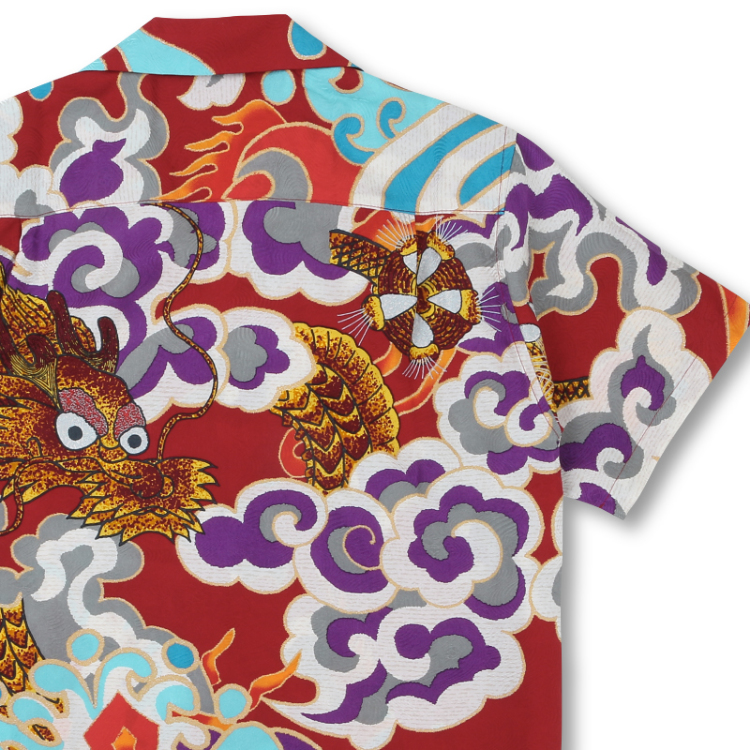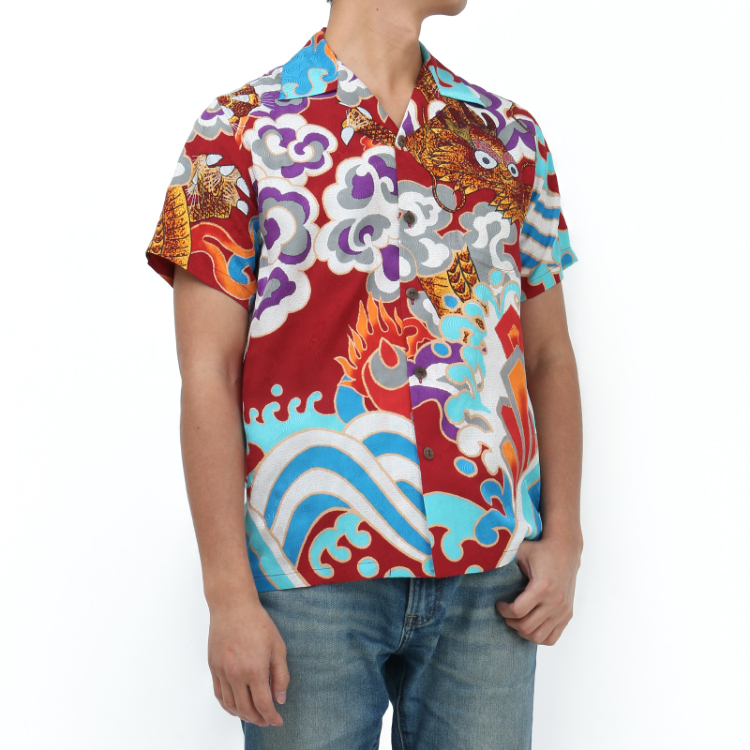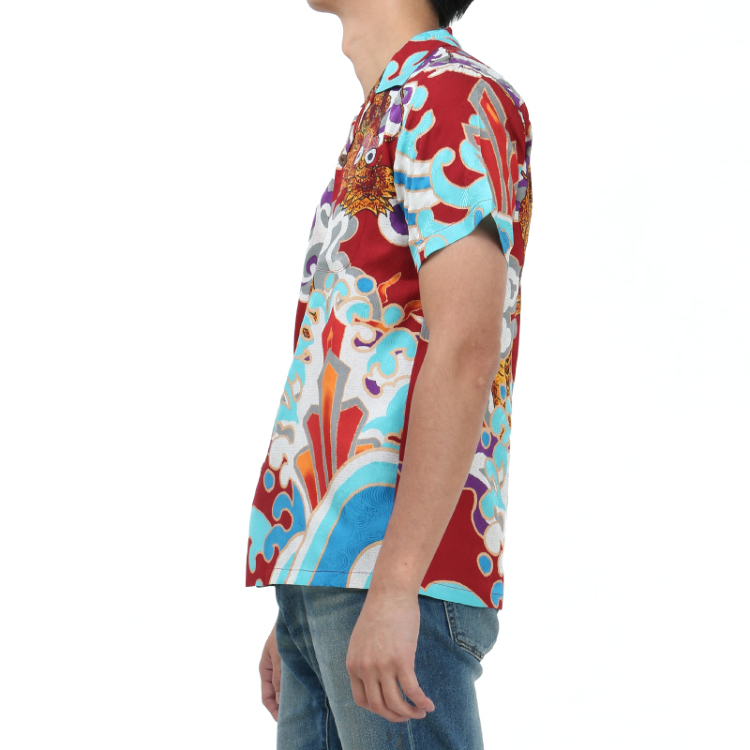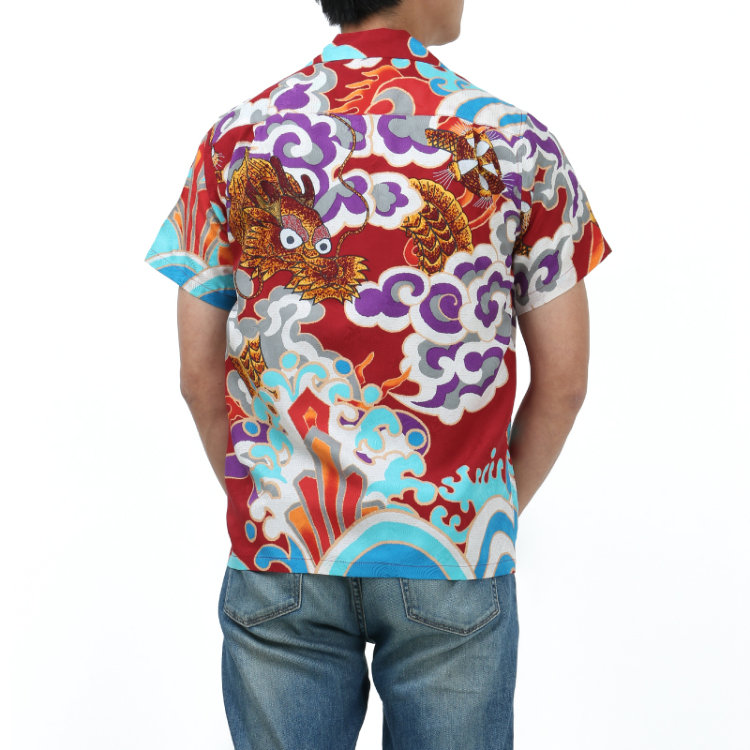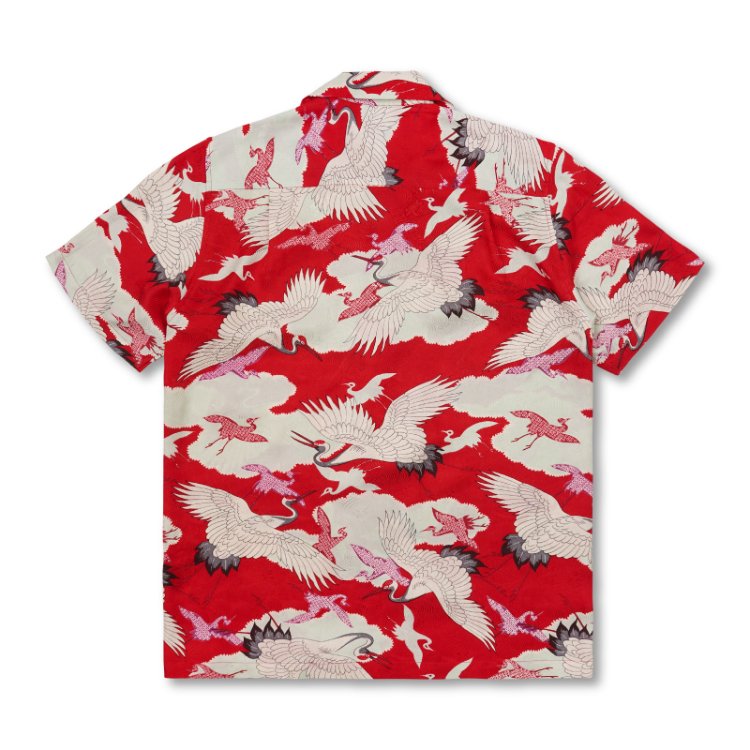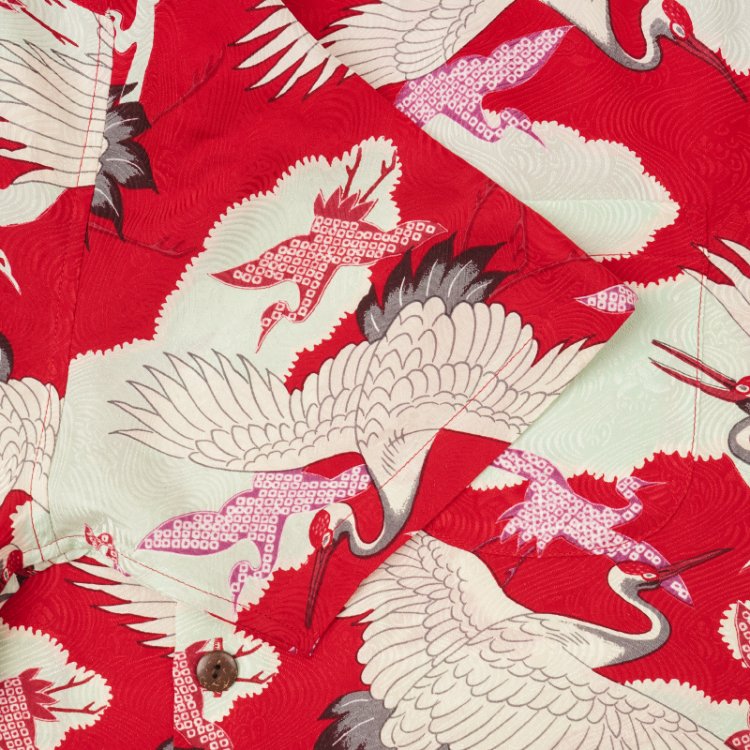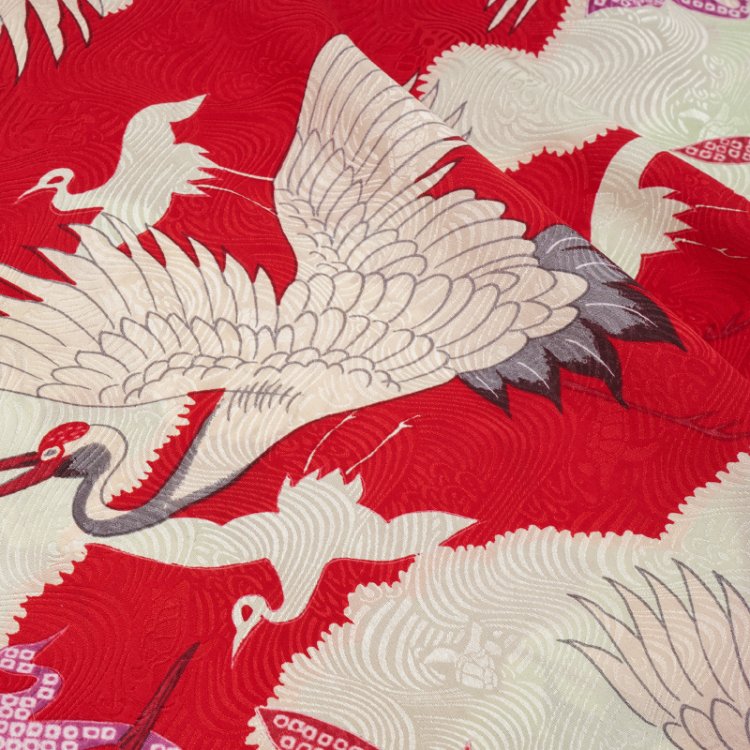 Image 1 of 16
Image 1 of 16

 Image 2 of 16
Image 2 of 16

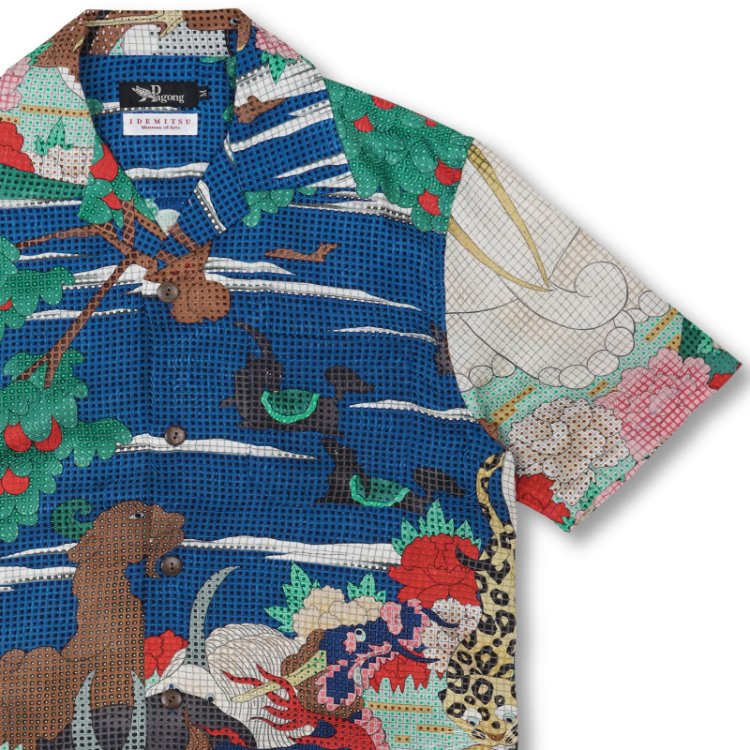 Image 3 of 16
Image 3 of 16

 Image 4 of 16
Image 4 of 16

 Image 5 of 16
Image 5 of 16

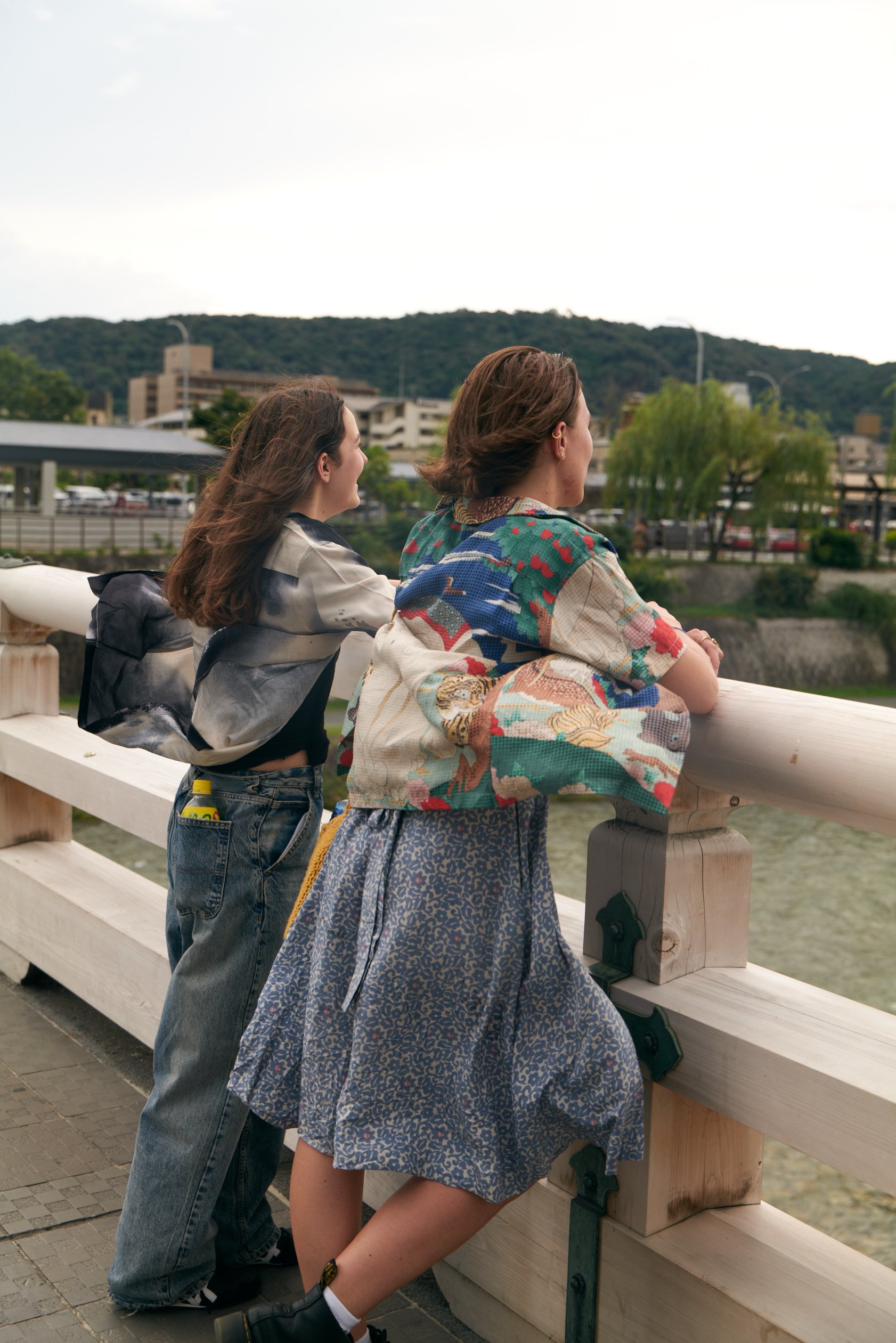 Image 6 of 16
Image 6 of 16

 Image 7 of 16
Image 7 of 16

 Image 8 of 16
Image 8 of 16

 Image 9 of 16
Image 9 of 16

 Image 10 of 16
Image 10 of 16

 Image 11 of 16
Image 11 of 16

 Image 12 of 16
Image 12 of 16

 Image 13 of 16
Image 13 of 16

 Image 14 of 16
Image 14 of 16

 Image 15 of 16
Image 15 of 16

 Image 16 of 16
Image 16 of 16

















CHOJUKABOKUZU- JAKUCHU ITO "Birds, Animals, and Flowering Plants in an Imaginary Scene" Silk Aloha Shirt
Color / Blue and Multi-color Care Instruction
Japanese name/ CHOJUKABOKUZU / JAKUCHU ITO
-About-
Jakuchu Ito (1716 to 1800) was raised in the Nishiki area of Kyoto during the “golden age of art” of the Edo era, before Japan opened its doors to the outside world.
Jakuchu was self-taught, and passionate about painting from childhood. A student of Buddhism at the Shokoku-ji zen monastery, he devoted himself to the art of painting, taking inspiration from classic Chinese paintings from the Yuan and Ming dynasties.
With nature as his teacher, he also began making thorough sketches of all natural phenomena, eventually establishing his own richly colored style of painting, as portrayed here in his “Birds,Animals, and Flowering Plants in an Imaginary Scene”, originally a pair of six-panel folding screens.
This timeless expression of flora and fauna is a testament to Jakuchu Ito’s originality and genius. It is comprised of roughly 43,000 squares within each of the painting’s panels. Animal figures within the scene are alive and alert showing their true nature in a style characteristic of Jakuchu.
At Pagong, in celebration of the 300th anniversary of the birth of Jakuchu Ito, we wish to breathe new freshness into these extraordinarily detailed depictions of plants and animals with the use of a kimono dyeing technique called Kyo-Yuzen.
~A collaboration with Idemitsu Museum of Arts.
・Currency : US Dollar (USD)
・100% Silk (Custom-woven Jacquard )
・Made in Japan
・Classic-fit Aloha shirt
・Coconut buttons
・Dry-clean
Color / Blue and Multi-color Care Instruction
Japanese name/ CHOJUKABOKUZU / JAKUCHU ITO
-About-
Jakuchu Ito (1716 to 1800) was raised in the Nishiki area of Kyoto during the “golden age of art” of the Edo era, before Japan opened its doors to the outside world.
Jakuchu was self-taught, and passionate about painting from childhood. A student of Buddhism at the Shokoku-ji zen monastery, he devoted himself to the art of painting, taking inspiration from classic Chinese paintings from the Yuan and Ming dynasties.
With nature as his teacher, he also began making thorough sketches of all natural phenomena, eventually establishing his own richly colored style of painting, as portrayed here in his “Birds,Animals, and Flowering Plants in an Imaginary Scene”, originally a pair of six-panel folding screens.
This timeless expression of flora and fauna is a testament to Jakuchu Ito’s originality and genius. It is comprised of roughly 43,000 squares within each of the painting’s panels. Animal figures within the scene are alive and alert showing their true nature in a style characteristic of Jakuchu.
At Pagong, in celebration of the 300th anniversary of the birth of Jakuchu Ito, we wish to breathe new freshness into these extraordinarily detailed depictions of plants and animals with the use of a kimono dyeing technique called Kyo-Yuzen.
~A collaboration with Idemitsu Museum of Arts.
・Currency : US Dollar (USD)
・100% Silk (Custom-woven Jacquard )
・Made in Japan
・Classic-fit Aloha shirt
・Coconut buttons
・Dry-clean

Color / Blue and Multi-color Care Instruction
Japanese name/ CHOJUKABOKUZU / JAKUCHU ITO
-About-
Jakuchu Ito (1716 to 1800) was raised in the Nishiki area of Kyoto during the “golden age of art” of the Edo era, before Japan opened its doors to the outside world.
Jakuchu was self-taught, and passionate about painting from childhood. A student of Buddhism at the Shokoku-ji zen monastery, he devoted himself to the art of painting, taking inspiration from classic Chinese paintings from the Yuan and Ming dynasties.
With nature as his teacher, he also began making thorough sketches of all natural phenomena, eventually establishing his own richly colored style of painting, as portrayed here in his “Birds,Animals, and Flowering Plants in an Imaginary Scene”, originally a pair of six-panel folding screens.
This timeless expression of flora and fauna is a testament to Jakuchu Ito’s originality and genius. It is comprised of roughly 43,000 squares within each of the painting’s panels. Animal figures within the scene are alive and alert showing their true nature in a style characteristic of Jakuchu.
At Pagong, in celebration of the 300th anniversary of the birth of Jakuchu Ito, we wish to breathe new freshness into these extraordinarily detailed depictions of plants and animals with the use of a kimono dyeing technique called Kyo-Yuzen.
~A collaboration with Idemitsu Museum of Arts.
・Currency : US Dollar (USD)
・100% Silk (Custom-woven Jacquard )
・Made in Japan
・Classic-fit Aloha shirt
・Coconut buttons
・Dry-clean
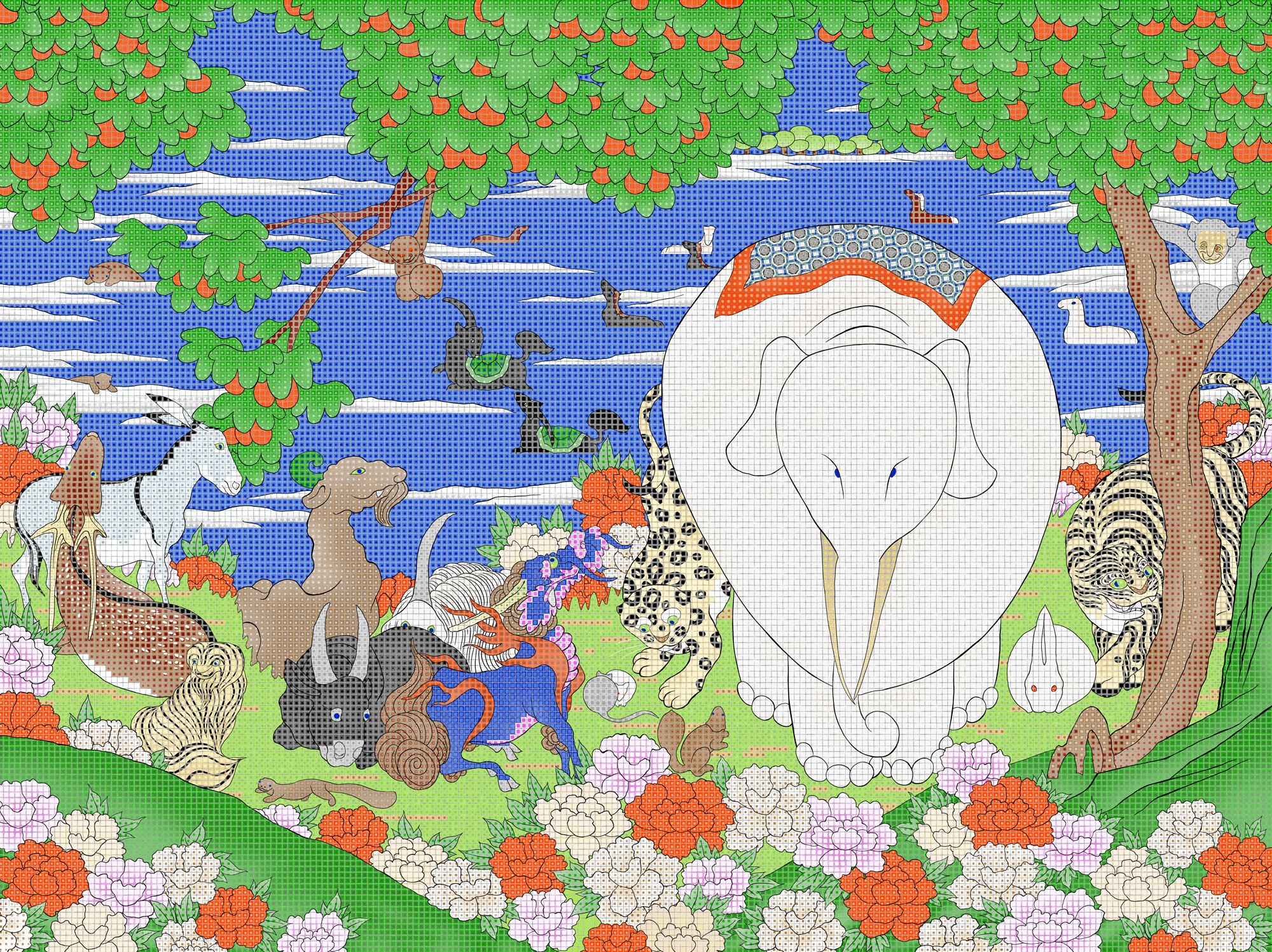




All of our 100% silk aloha shirts have our logo of “sea turtle and wave”, woven into our custom-made silk fabric.
We take pride in our clothing being designed, dyed, steamed, washed, and sewn entirely in Kyoto, Japan. Over this intricately woven pattern, we dye our designs…
Pagong’s personal archives house over 2000 Kimono patterns, which we choose from, as well as from museum archives.

If there is anything we can help you with, please feel free to let us know.
Contact Form >> www.pagongkyoto.com/contact


















